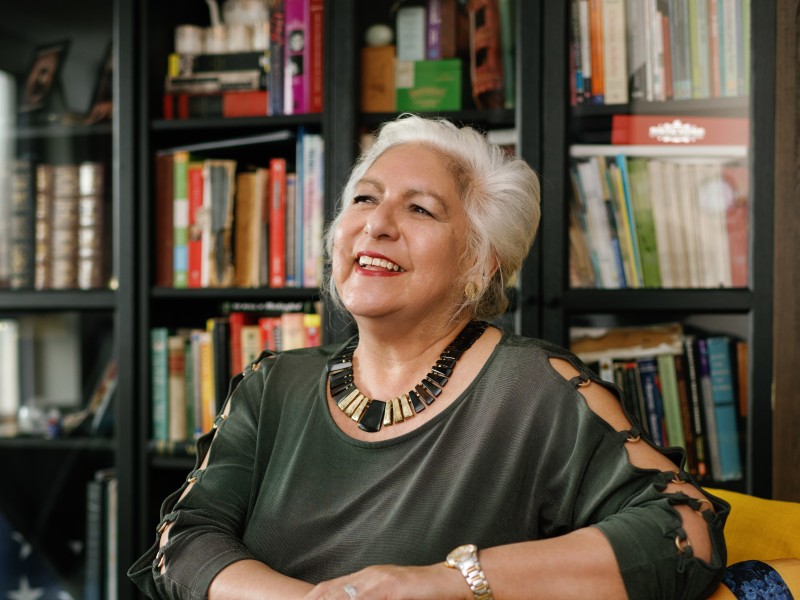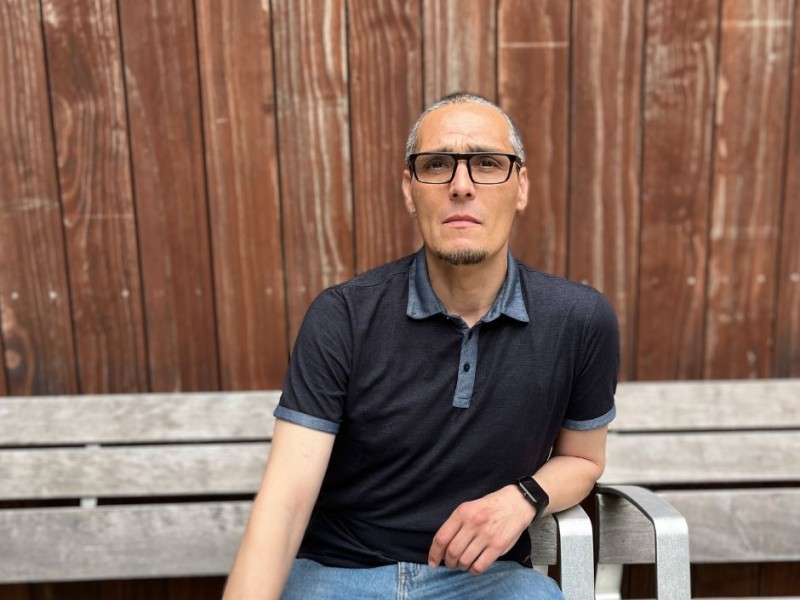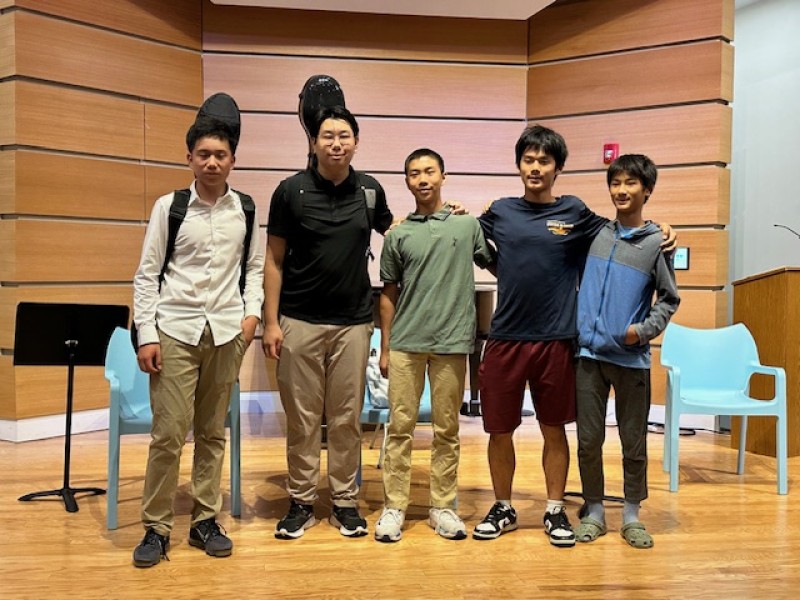The integrated model in action: A day in the life of 2Life residents
What difference does the integration of housing, health care, and home care make for 2Life residents? Let’s follow four fictional residents through different parts of their days and find out.
The integrated model in action: Joan
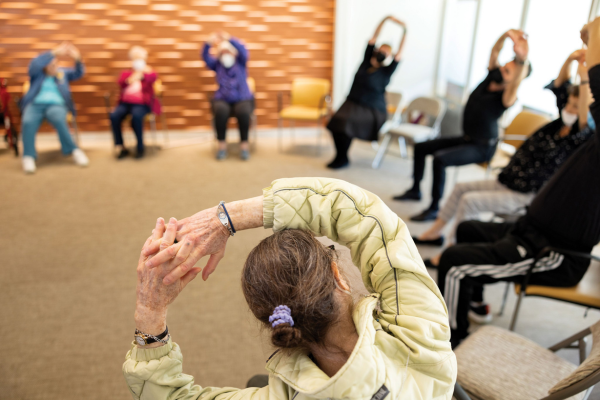
A little help to get the day started
Joan awakens in her sun-filled apartment. Because her arthritis and spinal stenosis have been acting up, she needs some help washing her hair and putting on her compression stockings.
A home care aide arrives at 8 a.m. to give her a hand. The aide spends about half an hour with Joan and then leaves to help another resident. The community shares home care services among multiple residents, allowing for short increments of care rather than the industry standard four-hour minimum. This makes it affordable for each person who needs it, like Joan.
Dressed and ready to start her day, Joan enjoys a cup of coffee and a healthy breakfast in her kitchen, which is intelligently designed with everything in easy reach. She notices her groceries are getting low, but she’s not worried. Joan knows she can get to the supermarket using the community’s ride service or visit the small convenience store in the building’s lobby to pick up a grab-and-go meal.
This morning, however, Joan heads down to the computer center to join a Tech Café class. She recently got an iPad and wants to stay in touch with family and friends. Volunteers in the Tech Café will give her a hand.
The integrated model in action: Wang & Mingzhu

Specialized programs help this couple thrive
Wang has Alzheimer’s disease. He lives with his wife, Mingzhu, in the same building as Joan, and twice each day he receives help from the same aides who assist his neighbor.
Wang attends an on-site adult day health program. When the program ends in the early afternoon, he stays in the same space to join an afternoon social day program. The social program, which aligns with the Alzheimer’s Association Habilitation model, uses art, music, and movement expressive therapies to promote positive emotion and a sense of well-being in people with dementia. Wang speaks Mandarin, so he greatly appreciates the fact that the masters-level expressive therapist who facilitates the program also speaks Mandarin.
The program extends into the late afternoon, when people with dementia tend to “sundown.” Having a structured program during this time of day is especially helpful for participants and their caregivers. Having these culturally sensitive programs and support available on site enables Wang to remain living in the community with his wife, as they (and their adult children) desire.
These services also provide Mingzhu with respite. She uses the time well, visiting with friends, participating in an art program, and otherwise engaging in activities that keep her connected and mentally and physically healthy. She is especially proud that a piece of her artwork hangs on the wall in one of the building’s common spaces, and it brings her joy every time she passes by.
After Wang and Mingzhu enjoy dinner together, a home health aide returns to help Wang get ready for bed. Mingzhu is relieved to know that, should she or her husband need assistance overnight, she can use the emergency pull cord in her apartment and a site representative who lives in her building will be there quickly to assist. This gives her and her family peace of mind.
The integrated model in action: Galina
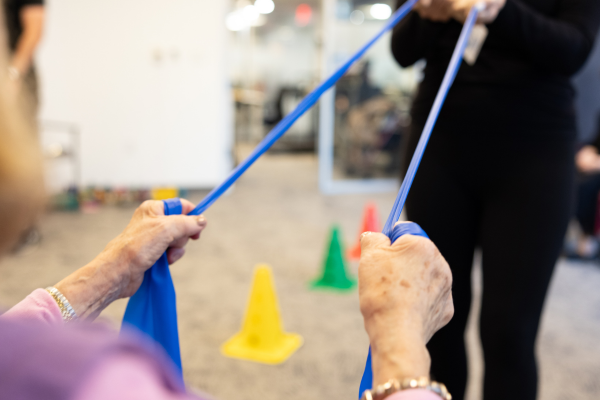
Customized exercise and health care fuel independence
Galina has Parkinson’s disease and understands the value of keeping active and moving. So, after breakfast, she heads down to the bright and airy community room, where a seated exercise class is about to begin. An experienced member of the fitness team leads the class — a specialized, evidence-based program for people with Parkinson’s. On other days, Galina visits the fitness center to use the customized exercise program that 2Life’s geriatric-trained fitness specialists have created specifically for her.
After class, Galina returns to her apartment for lunch. She heats up a prepared meal that the local senior services provider left her earlier. The 2Life resident services coordinator (RSC) helped her arrange the meal service, which she loves because it is so much easier than trying to cook something herself, and it enables her to manage lunch independently.
After lunch, Galina heads down to the wellness clinic to have her blood pressure taken. She has high blood pressure, and her primary care provider recommends that she monitor her blood pressure between appointments. Galina appreciates having a nurse come on site weekly to check this and other vital signs. She can talk with the nurse about other health matters too, including any side effects she’s experienced with a new medication.
In addition to the weekly nursing clinic, Galina can get her flu and COVID-19 vaccines on site and meet with specialists, including podiatry, dental, and chiropractic care providers.
